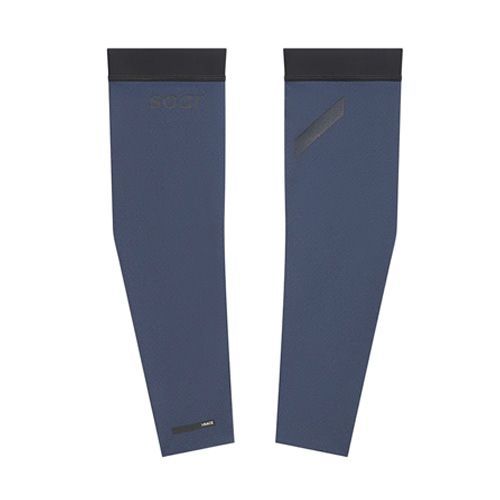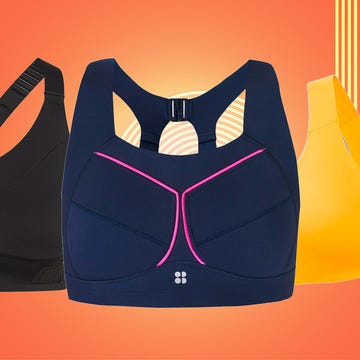Black, blue, white.
9 Black, blue, navy, olive
The best RW-lab-tested running jackets

You probably don't own a pair of arm sleeves, but they’re a really versatile kit hack for keeping warm on cool days and protecting your skin from the sun.
Sleeves offer against-the-skin sweat-wicking for temperature and moisture management and, if you do start getting hot, they’re easy to roll down or take off and stow – perfect for transitional autumn days when chilly starts can melt into warmer miles.
What to consider
Compression
According to various studies, compression sleeves are designed to support your muscles through pressure and tightness, improving blood flow whether you are running or recovering. Arm compression sleeves stabilise the muscles and tendons in your arms during runs while also speeding up post-run recovery by reducing lactic acid build-up, which is known to cause fatigue and soreness.
Another benefit of compression sleeves is their ability to regulate body temperature. Compression sleeves draw moisture away from the body, thus, cooling it down and helping conserve the runner’s energy.
Thickness
Choose the thickness of your compression sleeve based on the climate you’ll run in. Opt for thick, insulated sleeves made of materials like wool if you’re trying to keep warm in a chilly environment. If your primary goal is to protect your arms from the sun, find the thinnest sleeves you can, ideally with cutouts for ventilation.
Material
Fitness apparel is made of synthetic fibres (nylon, polyester, or spandex), natural fibres (wool, cotton, or bamboo), or a combination of both. Synthetic fabrics tend to be lighter, making them a good choice for summer running. They’re also better at moisture-wicking than many natural materials, but some athletes find natural fibres softer and more comfortable.
If you prefer natural fabrics due to allergies or sustainability reasons, options like merino wool and alpaca provide natural moisture-wicking, don’t absorb odour, and help regulate your warmth — but, as aforementioned, they’re much too warm for hot summer days.
Most arm compression sleeves are made with synthetics unless they’re expressly designed for winter. That’s partly because synthetic materials stretch easily, which helps the sleeves stay snug against your arms so they don’t slip down. Sleeves with a high percentage of Spandex, sometimes called elastane or branded as Lycra, generally stretch more, so if you have big arms, consider an extra stretchy option.
UPF
Ultraviolet protection factor, or UPF, indicates how much UV passes through its material onto your skin. Factors like the type of fabric fibres, the tightness of the weave, and the colour all play a role in UPF. Loosely woven materials might feel nice and breezy, but they also reduce sun protection — and some materials, though woven tightly, don’t filter out any UV rays. UPF ratings are clearly stated on product descriptions and in our recommendations below.
The UPF rating system appears similar to SPF, but while sunscreen is rated based on how long it provides protection, UPF is determined by how much UV the material allows to reach your skin. For example, a product with a UPF rating of 30 allows one-thirtieth of UV rays to reach your skin, while UPF 50 brings that down to one-fiftieth.
Any coverage is better than none for preventing sunburns and reducing the likelihood of skin cancer, but if you’re looking for substantial protection, wear something with a UPF rating over 50 (and always wear sunscreen, too!).
More cold weather running picks from RW
Watch Next






















